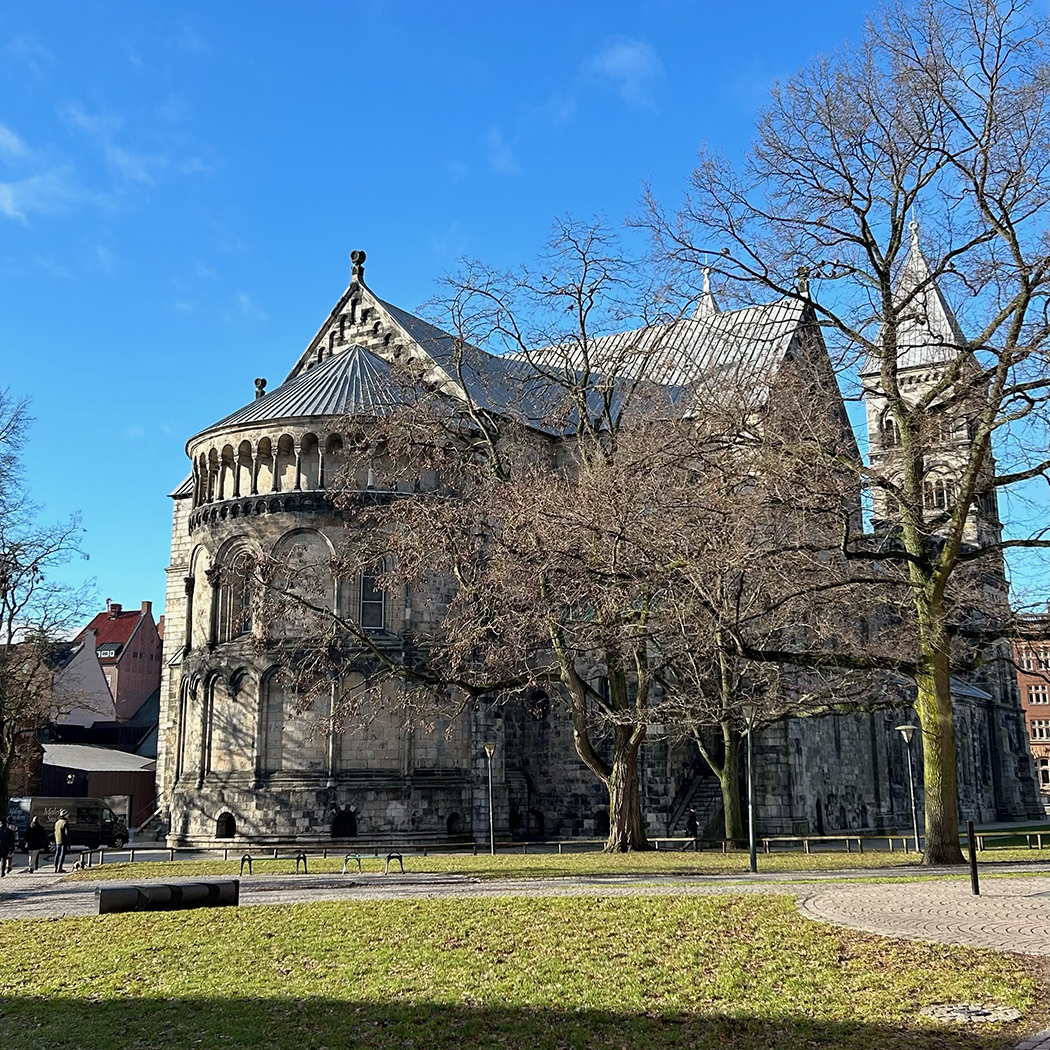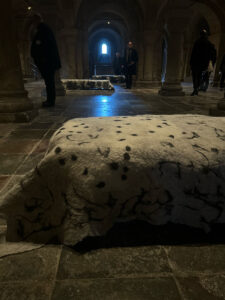 By Canon James Mustard
By Canon James Mustard
Earlier this month, I had the pleasure and privilege of attending the Northern European Cathedrals Conference in Lund, Sweden. The conference, which meets every other year, draws representatives from cathedrals of the Porvoo Communion (Lutheran churches of Scandinavia, Iceland, the Baltic and Germany, and the Anglican churches of Britain and Ireland) and the Netherlands to discuss our responses to shared themes. This year’s conference Cathedrals in Uncertain Times focussed upon how we minister to communities and dioceses undergoing rapid change. Additionally, we celebrated with Lund its 900th anniversary, heard oratorios and other music works written for their jubilee, and looked at ways in which that cathedral is meeting its financial challenges through new relationships with its city and the co-developing a new suburb.
Cathedrals come in all shapes and sizes, with different histories, ministries, and funding. But all are in some sense a focal point for their communities, and sometimes the tensions within and around them. As with any conference, one learns as much from casual conversation as from presentations. One of the most notable conversations I had was with the Dean of the Lutheran Cathedral in Tallinn. Estonia. “What has the impact of the war in Ukraine been upon you and your cathedral?” I asked. His response was deeply moving.
He described his community’s struggle to accommodate and minister to the tens of thousands of Ukrainian refugees who fled their home for safety in the Baltic States and Estonia. Most of them were Orthodox but felt betrayed by their church. So, they gravitated toward the Lutheran church. At the same time, before the border was closed, Russians fled into Estonia to avoid being drafted into the army or suffer persecution and privation. They too were gravitating toward the Lutheran Cathedral for fear that the Orthodox churches in Estonia might be connected to the Russian regime. Both groups were traumatised. Both groups spoke Russian as either a first or second language. When both groups met, however, there was frequently bitter conflict between them, often physical and irreconcilable. The Dean of Tallinn was in tears when he spoke of the impact of those refugees and encounters upon him and his community. For him, the conference and its more abstract discussions of the psychology and theology of uncertainty were a refuge from ministry in a place of refuge and conflict.
 Following that conversation, artist Ingvild Hovland Kaldal showed us her installation in the Crypt of Lund Cathedral, a quite magnificent and otherworldly space, the exhibition Night Active. She described the Crypt as the “subconscious” of the Cathedral, her exhibition an exploration of both sleep and death as important underpinnings to churches and societies often feverishly busy, preoccupied with meeting and targets, and running away from death.
Following that conversation, artist Ingvild Hovland Kaldal showed us her installation in the Crypt of Lund Cathedral, a quite magnificent and otherworldly space, the exhibition Night Active. She described the Crypt as the “subconscious” of the Cathedral, her exhibition an exploration of both sleep and death as important underpinnings to churches and societies often feverishly busy, preoccupied with meeting and targets, and running away from death.
Returning home, it struck me that perhaps the real story of the Northern European Cathedrals Conference, of Cathedrals in Uncertain Times, was that of Tallinn. Though Ukraine and Russia were very much in the background, the subconscious, much of the conference was focussed upon safer territory: of histories and future planning, with little regard to global politics. Repeatedly, I have been thinking back to Lund’s crypt, and wondering where Exeter Cathedral’s subconscious is to be found? We don’t have a crypt, but where is the space where we might bring those parts of ourselves which we might only encounter in sleep or in death? They are key themes of our worship of course, but corporate worship is not always the easiest place to pause. Is it our Library, that vast repository of hopes and fears of all the years? Is it our Quire? Our Lady Chapel? One of the joys of our Cathedral is that it is a busy place with something for (almost) everyone! But where is the place where we can just be? And if we don’t have a physical space for that, how can we encourage that sort of engagement? Art is often a powerful way to open up such discussions: recent planetary installations have nudged us in that direction. Perhaps tomorrow’s Candlelight Concert offers such an opportunity, too?
Images:
Lund Cathedral photographed by James Mustard
Sleep Active by Ingvild Holland Kaldal Photographed by James Mustard